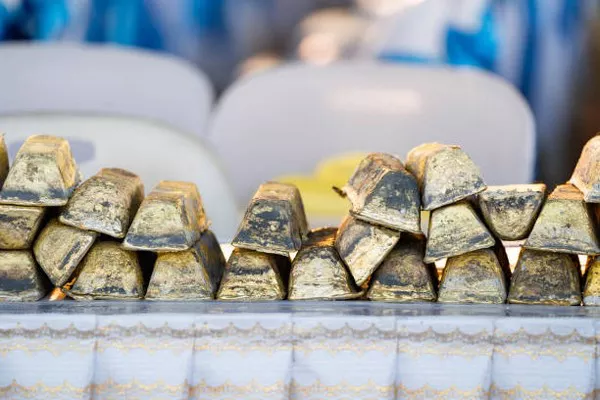In the realm of investment, precious metals have always held a prominent place due to their perceived intrinsic value and ability to act as a hedge against economic uncertainty. Silver, in particular, has garnered attention from investors seeking diversification and protection against inflation. While physical ownership of silver has traditionally been the norm, technological advancements in financial markets have made it increasingly convenient to invest in silver through Exchange-Traded Funds (ETFs). This comprehensive guide aims to provide practical insights into understanding, evaluating, and purchasing silver ETFs.
What Are Silver ETFs?
Silver ETFs, or Exchange-Traded Funds, are investment vehicles designed to track the price of silver. Investors can buy shares of these funds, which represent fractional ownership in a pool of silver assets. Unlike physical silver, which requires storage and insurance, silver ETFs offer a convenient way to gain exposure to the silver market without the hassle of ownership.
Advantages of Silver ETFs
Investing in silver ETFs offers several advantages over traditional methods of silver investment:
Diversification: Silver ETFs provide investors with exposure to the silver market without the need to hold physical silver. This allows for greater diversification within an investment portfolio.
Cost-Effectiveness: ETFs typically have lower expense ratios compared to actively managed funds, making them a cost-effective option for gaining exposure to silver.
Liquidity: Silver ETFs are traded on stock exchanges, offering high liquidity and ease of buying and selling compared to physical silver.
Transparency: ETF holdings are publicly disclosed, providing investors with transparency into the fund’s silver exposure and underlying assets.
No Storage Hassles: Unlike physical silver, which requires secure storage and insurance, silver ETFs eliminate the need for storage hassles, making them a convenient investment option.
What Are Silver ETFs?
Silver ETFs are investment funds that track the price of silver. They allow investors to gain exposure to silver without owning the physical metal. Here are some key characteristics of silver ETFs:
Definition: Silver ETFs are investment funds that track the price of silver. They allow investors to gain exposure to silver without owning the physical metal.
Ownership: Investors buy shares of the ETF, which represents ownership in a pool of silver assets. This allows for fractional ownership of silver without the need to buy and store physical bars or coins.
Liquidity: ETFs are traded on stock exchanges, making them highly liquid investment vehicles. Investors can buy and sell shares of silver ETFs throughout the trading day at market prices.
Advantages of Silver ETFs
Investing in silver ETFs offers several advantages over other methods of investing in silver:
Diversification: Silver ETFs provide investors with exposure to the silver market without the need to hold physical silver. This allows for greater diversification within an investment portfolio.
Cost-Effectiveness: ETFs typically have lower expense ratios compared to actively managed funds, making them a cost-effective option for gaining exposure to silver.
No Storage Hassles: Unlike physical silver, which requires secure storage and insurance, silver ETFs eliminate the need for storage hassles, making them a convenient investment option.
Transparency: ETF holdings are publicly disclosed, providing investors with transparency into the fund’s silver exposure and underlying assets.
How to Buy Silver ETFs
Follow these steps to invest in silver ETFs:
Choose a Brokerage Account:
To invest in silver ETFs, you’ll need to open an account with a reputable brokerage platform that offers access to ETFs. Consider factors such as fees, user interface, and customer support when selecting a brokerage account.
Research Silver ETFs:
Before investing in silver ETFs, research different ETFs that focus on silver. Consider factors such as expense ratios, assets under management (AUM), and liquidity. Some popular silver ETFs include:
iShares Silver Trust (SLV): This ETF provides exposure to physical silver stored in JPMorgan Chase vaults.
Global X Silver Miners ETF (SIL): This ETF invests in silver mining stocks.
ETFMG Prime Junior Silver Miners Fund (SILJ): This ETF focuses on smaller-cap silver mining stocks.
Select the Right ETF:
Once you’ve researched different silver ETFs, select the one that best fits your investment objectives and risk tolerance.
Place an Order:
Log in to your brokerage account and search for the chosen silver ETF by its ticker symbol (e.g., SLV, SIL, or SILJ). Place a buy order specifying the number of shares you want to purchase.
Monitor Your Investment:
After purchasing silver ETFs, monitor the performance of your investment regularly. Consider setting stop-loss orders to protect against significant declines in the ETF’s price.
In conclusion
Silver ETFs offer investors a convenient and cost-effective way to gain exposure to the silver market without the complexities associated with physical ownership. By understanding the search intent, defining silver ETFs, highlighting their advantages, and providing practical guidance on purchasing them, investors can make informed decisions when incorporating silver ETFs into their investment portfolios.


